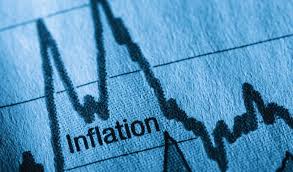Pakistan’s Weekly Inflation Drops by 0.35% as Vegetable Prices Fall

Pakistan’s weekly inflation, as measured by the Sensitive Price Indicator (SPI), has decreased by 0.35% for the week ending March 20, 2025. The decline is primarily attributed to a significant drop in vegetable prices, according to data released by the Pakistan Bureau of Statistics (PBS).
Price Drop in Vegetables and Essential Goods
Vegetables, which form an essential part of daily consumption, saw notable price reductions. Tomatoes experienced the steepest fall, dropping by 7.08%, while onions saw a decrease of 6.07%, and garlic prices fell by 5.59%. Other staple items, including eggs (-4.64%), potatoes (-2.5%), sugar (-0.87%), and branded tea (-1.3%), also registered slight declines. Firewood, a key domestic fuel source, decreased by 0.6%.
However, some consumer goods did see price hikes. The cost of long cloth rose by 1.23%, printed lawn fabric by 2.9%, and liquefied petroleum gas (LPG) by 1.53%. Additionally, food items such as bananas (+1.45%), bread (+0.55%), beef (+0.25%), and curd (+0.24%) experienced small price increases.
Annual Inflation Overview
On an annual basis, SPI inflation has shown a rare 1.2% decrease. Key staples like onions (-67.67%), wheat flour (-35.58%), and tomatoes (-29.45%) saw significant price reductions compared to the same period last year. Additionally, electricity tariffs for the lowest consumption bracket dropped by 18.92%, and fuel prices moderated, with diesel (-9.37%) and petrol (-8.55%) showing year-on-year declines.
Despite the overall downward trend, several essential goods continue to see substantial price hikes. Ladies’ sandals surged by 75.09%, powdered milk rose by 25.75%, and beef prices increased by 21.01%. Other food items such as chicken (+18.23%), sugar (+18.65%), and vegetable ghee (+16.13%) also saw notable price increases.
Inflation Impact on Income Groups
The inflationary trends have varied across different income groups. Lower-income households have benefitted more from the recent price adjustments, with the lowest consumption quintile experiencing a 1.84% decrease in inflation year-on-year. In contrast, the highest quintile recorded a smaller decline of 0.49%.
Projections and Future Outlook
Despite persistent inflationary challenges, Pakistan has made significant progress in managing price hikes. According to estimates from Topline Securities, the Consumer Price Index (CPI) for March 2025 is projected to decline to a three-decade low, ranging between 0.5% and 1.0% year-on-year, with a monthly increase of 0.9%.
This decline would bring the average inflation for the first nine months of FY25 to 5.38%, a sharp drop from the 27.06% recorded during the same period last year.
As inflationary pressures continue to affect consumers, these developments reflect a slight easing of price increases for key goods, although challenges remain for Pakistan’s economy.




